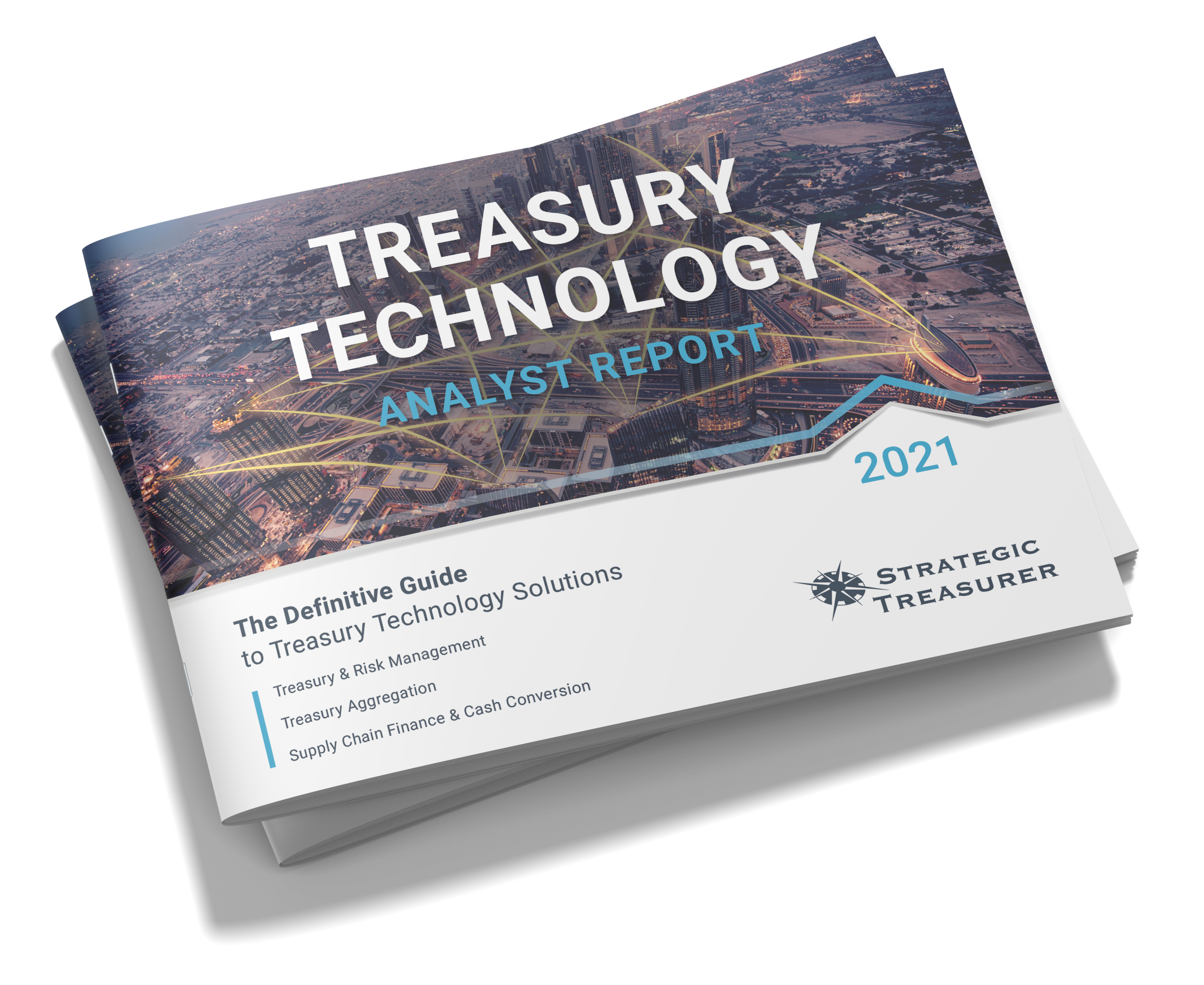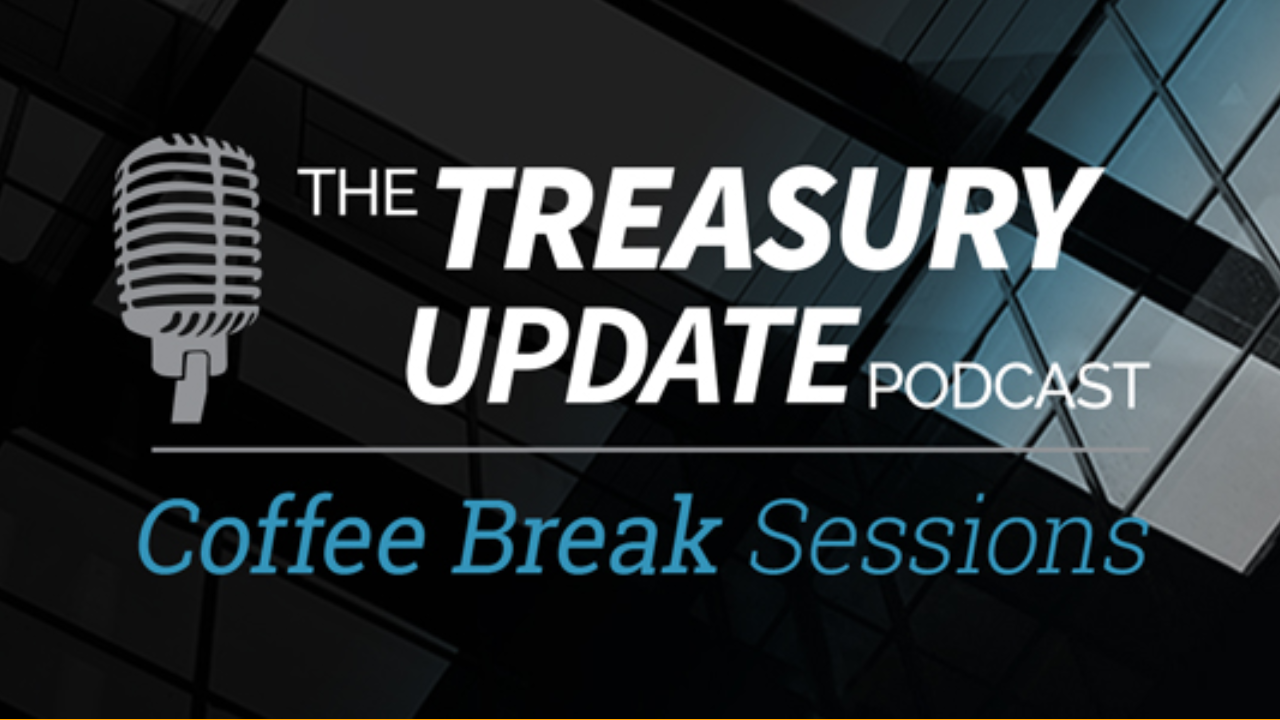
Episode 197
Simplify Your Workflow with Embedded Treasury
Speaker:
Craig Jeffery, Strategic Treasurer


Subscribe to the Treasury Update Podcast on your favorite app!
Episode Transcription - Episode #197 - Simplify Your Workflow with Embedded Treasury
Nicki Gillispie 0:02
Welcome to The Treasury Update Podcast presented by Strategic Treasurer, your source for interesting treasury news, analysis, and insights in your car, at the gym or wherever you decide to tune in. For today’s podcast, I wanted to get an understanding about embedded treasury. What do you mean by embedded finance, banking, and treasury?
Craig Jeffery 0:25
Embedded is description of a process that is seamless that might be transacting in context, from a banking perspective or treasury perspective. And this would be set apart or compared to disjointed activities and systems. Yeah, let me give an example. So, some embedded would be different from disjointed or separate processes are separate and discrete finance or banking or treasury, you know, one example of this would be how moving around in vehicles that are driven by other people to play. So it wasn’t that long ago, where you get into a taxi, may hail a tax, if you’re in a city, you raise your hand they pull over, you tell them where they go, they drive you to location, perhaps to take a direct route, maybe they don’t you pull over you’ve got to hand them cash, or maybe they had a credit card machine on the back of their headrest. Can you punch that in? Maybe they’ve even covered up with a code saying it doesn’t work. But so, you have to do all that and then they give you this little printed receipt that’s about the size of a postage stamp. And you try to stick it in your pocket as you scramble out of the cab, in the rain to some other location. Everything was very disjointed; everything was disconnected when you think about embedded banking or embedded transaction. Now in your rideshare app, you see where the cab is, you see where the rideshare is where they’re coming? You know who’s going to pick you up? When you get in, they already know where you’re going, and they talk with them or maybe not. When you get there, you step out, you have a greeting you don’t have to do anything. All you do is poke them out of tip you want to leave them and your receipt, goes to your email or goes to your systems going to book those items that’s all seamless. And so, embedded finance or embedded banking or embedded treasury is incorporating these so that as you act and as you transact, that’s all-in context of what you’re doing. It’s not separate or disjointed. And this is usually accomplished by using APIs to make these types of experiences more seamless.
Nicki Gillispie 2:33
Great, what are some of the key activities or developments that have led us to these terms and these concepts?
Craig Jeffery 2:40
So, what brought this about? Well, I think some of it, Nicki, is that over time technology has changed. We have better ways of connecting. We’ve gone from very difficult ways of sharing data, whether it’s through file transfer protocols or more legacy APIs to better API’s. There’s been some regulations like PSD2 our Payment Services Directive Two, which required banks to support APIs for transaction providing a regulatory framework to basically force the opportunity for more innovation and while that may be related to a particular region of Europe, that type of mindset is also spread from a purely competitive standpoint. This view, a more integrated mindset and expectation, comes about from our personal experiences as well, like apps on our smartphones like I was talking to you a second ago about rideshare. I pulled another data, other services, they become seamless and integrated, almost behind the scenes for these activities. So, our development, our expectations, regulations, and just advances in fact, are all helping to become reality.
Nicki Gillispie 3:51
Great, thank you. Why should we care about this? Like what’s important about this?
Craig Jeffery 3:55
People care about this because an embedded experience matters for efficiency, as well as control, and while on the consumer side, we may not care about controls as much as we have control of our cell phone for example, on the corporate side, efficiency matters as does control as does other services and other features that we may need to accomplish. And so, we care about it because these types of technological changes and process changes, support better services, increased innovation, you might have some transaction, but the settlement of payments can be very discrete or treated separately, whereas, we can have those embedded, if a contract that has payment terms that could become embedded in the contract and payments will move when certain events are triggered. Better integration matters in a lot of ways for corporate treasury or treasury teams this this can matter from a recruiting or retention perspective. We need to have employees that care and want to do things with good technology and younger workers don’t put up with as much nonsense as people who may reflect on things when they were worse in terms of, I have accomplished the ability to focus on more important nonoperational tasks is immensely framed. It’s not only an efficiency play, it helps turn and unleash your your teams to be far more strategic and more tactical in different areas. So, it’s an expectation it’s a requirement for staffing requirements for growth from a banking perspective. Nikki, I think about two areas at least briefly transactional and relationship or strategic on the transactional side, you want to be in the transactions as the banking partner and the mind of your customers to give them the data and make it easier to do business with you in a seamless way. And from a relationship perspective, reducing friction, being able to add insight at other values helps the bank be a better partner. If you’re a better partner, you’ll have more mindshare, you’ll get more wallet share. You’ll just be easier to transact with and everyone’s looking for points of differentiation. And if you’re a technology firm, this matters heavily to you as well, I mean, leads to faster adoption of your services, broader adoption, adds more value to your solution set and that value increases over time. Changing that perspective of an asset that decreases over time to one that increases over time is only accomplished by being able to do more things, more easily. So, you’re constantly adding value. So those are, those are some of the reasons that we should care about that no matter what seats we are sitting in.
Nicki Gillispie 6:44
Great. What is the status on embedded treasury?
Craig Jeffery 6:48
That’s probably your hardest question today. I’ll talk about them generally, so on for banks and FinTechs. I would describe that as it’s a rapidly maturing concept. Maybe there’s a preteen level. Banks and FinTechs are doing some things, certainly on the conceptual side, some are quite advanced, others are a little farther behind. So, an operational standpoint, a range of thinking can be very early stages to some are actually operationalized. And we see this area as something’s moving very, very quickly. You’re looking at the next two years. This is going to bring dramatic change. And some may think that this appeared out of the ether, but that’s definitely not the case. Many things technology, expectations, regulations, demand for efficiencies, those are aligning and driving us in this direction. And yet there’s a lot more work that’s needed in embedded treasury and embedded banking for those groups. Here’s some examples of things that companies are already doing. One is integrated information reporting, balances, transactional data, not just on a prior day basis, but on a current or near real-time basis, can flow into your accounting system, your ERP, a treasury platform, a transaction system, or a company developed app, by leveraging the API library so I can see my balances when I need them, or whenever I want to. And the same thing can be said for payments. We gave examples on the consumer side for integrated payments. When we were talking about that earlier, but making payments be far more embedded in the process. And whether it’s in a smart contract or a simple, easily executed transaction, with all the required controls that are there, validations of bank owners, account information, verification, confirmation, all that can be embedded, whether it’s using API’s or some other methods. People know that transaction has it occurs maybe I want to know, every time something successful, maybe I want to know if something’s delayed. Whether we see that with embedded information with package delivery. If we know where the stuff is plus the warehouse on the truck, it’s now on your front porch. Same thing with payments, with transactions, with activity and the list continues Nicki whether we think about account management, integrating with ERP systems, data providers, having data see where we need it, we don’t just want to know that we have data somewhere we want it to be accessible. So, there is a lot, a lot of room to grow in this area. But conceptually, it’s moving along nicely and there are certainly some examples, in the wild, in the real world. It’s making a difference in the lives of bankers, corporate treasury, and other areas and other organizations.
Nicki Gillispie 9:46
Thank you, all of your examples were very helpful. Do you have any final thoughts?
Craig Jeffery 9:50
No, Nicki, I appreciate the time asking these questions and talking on it. I do think there’s certainly a lot more topics we can explore on future podcasts and with other with other speakers as well. So extra talking through embedded treasury basics with me.
Nicki Gillispie 10:05
Great, thank you so much.
OUTRO 10:09
You’ve reached the end of another episode of The Treasury Update podcast. Be sure to follow Strategic Treasurer on LinkedIn, just search for Strategic Treasurer. This podcast is provided for informational purposes only, and statements made by Strategic Treasurer LLC on this podcast, are not intended as legal, business, consulting, or tax advice. For more information, visit and bookmark strategictreasurer.com.
Related Resources
Treasury Technology Analyst Report
Researching new treasury and finance technology can be overwhelming. Strategic Treasurer has stepped in to help. Explore our definitive guide to the treasury technology landscape and discover detailed, data-based coverage of each area.








